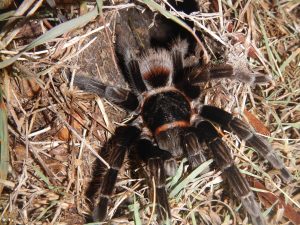Both the tropical rainforest and coral reef ecosystems host a great biodiversity of organisms, which depend upon each ecosystem’s structure for survival. To start off, both ecosystems can be stratified into layers; as a result, some structures in the rainforest and reef will be more exposed to light than others. Varying amounts of light creates different microhabitats, fostering a large biodiversity of organisms adapted to specific niches in each habitat. An array of organisms will also adapt to the habitat’s nutrient availability (dependent on light availability), thus also promoting a large biodiversity of life.
Personally, I have noticed that micro-organisms play a large role in the trophic balance of both ecosystems and that their presence should not be discounted. A lot of human-made environmental stressors are being put on these environments, resulting in activities such as defaunation, deforestation, and coral bleaching. As far as differences go, the rainforest appeared to be more of an enigma; whereas in the coral reefs we would see larger fish such as nurse sharks and sting-rays floating around every now and then, the rainforest offered a lot more cover and megafauna sightings by eye were few and far between. Also, life on the forest floor is different than life on the ocean floor- the forest floor has detritus, fallen tree trunks, and leaf litter which provide perfect habitats for many organisms while the ocean floor’s organismal diversity is not as abundant.
This course completely exceeded my expectations- granted, I did not really know what to expect in the first place. I have never trekked in a rainforest or snorkeled in such close proximity to coral reefs before, so every single day was a sensory overload. On one hand I was trying not to succumb to the waves and crash into reef structures/trip on a hidden root during the steep 50 hectare declines and on the other I was attempting to observe all of the sights, sounds, and smells around me because this expedition is a once-in-a-lifetime opportunity. I truly enjoyed every second of this course and am more confident in my body’s maneuverability because of it.
My favorite parts of the course were hands down the trek to and from the Bird Tower and the lionfish dissection. The steep hike up to the Bird Tower just oozed a serene ambiance- I felt like I was traipsing through a painting, somehow managing not to trip on anything while the evening’s orange rays poked through the canopy. The views from the Bird Tower were breathtaking. To top it off, we all sat and listened to Turiez talk about her research work while munching on Doritos. Classic. The night hike down was even better- there was a point where we quietly stood still under the moonlight and listened to the sounds of the rainforest. That moment really put the size of the rainforest and the size of my body into perspective. The world is so anthropocentric and I feel like I get caught up in human social constructs instead of realizing that other life forms exists outside of the human species. The lionfish dissection was great too- I’ve always loved dissecting animals since middle school and enjoy comparing anatomical similarities between organisms.
Least favorite part- definitely the blue land crabs and moths. They have been so menacing to me the whole trip. However, I would do anything for more blue land crab/moth interactions if it meant being able to stay in Belize for another week.

Despite the time and effort we all put into the lectures, I think the most important lessons from the course came out in the field. No matter how meticulously tailored an experiment is to the rainforest/coral reef, the truth is that these ecosystems are incredibly complex and standardizing a problem with experimental trials and data is tough- there will rarely be a “final answer” to a certain question. I learned to trust my sense of balance a bit more after being battered by waves of salt water and tripped by roots that grab onto your ankles, which can hopefully get me through the concrete jungle of life just fine. Finally, here’s an important tidbit of information I’ll find useful if I go trekking off-trail in the future: off-trail trails made by other people can be identified by bent stems, upside-down leaves, hacked sticks, and various other subtle markers.
Belize was fun and unbelievable. It was funbelizeable (I really hope that pun catches on).















